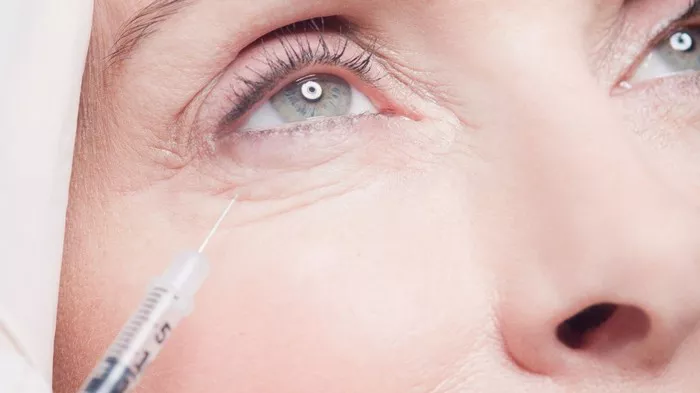As individuals age, one of the most noticeable signs of the aging process is the development of wrinkles, especially deep wrinkles. Deep wrinkles, often associated with skin laxity and loss of collagen, can have a significant impact on one’s appearance and self-esteem. While there are various treatments and procedures available to address wrinkles, the question remains: Can wrinkle removal surgery completely remove deep wrinkles? In this article, we will explore the options available for addressing deep wrinkles, including surgical and non-surgical approaches, and what patients can expect from each.
Understanding Deep Wrinkles
Before delving into the treatment options, it’s essential to understand what deep wrinkles are and how they develop:
Causes of Deep Wrinkles:
Deep wrinkles often result from a combination of factors, including natural aging, exposure to UV radiation, smoking, genetics, and repetitive facial expressions.
The breakdown of collagen and elastin fibers in the skin contributes to the formation of deep wrinkles.
Types of Deep Wrinkles:
Dynamic Wrinkles: These wrinkles occur when facial muscles contract, leading to the formation of lines and creases. Common examples include frown lines (between the eyebrows) and crow’s feet (around the eyes).
Static Wrinkles: Static wrinkles are visible even when the facial muscles are at rest. They are often more pronounced and deeper, affecting areas like the nasolabial folds (lines from the nose to the mouth) and marionette lines (lines from the corners of the mouth to the chin).
Now, let’s explore the treatment options available for addressing deep wrinkles.
Non-Surgical Treatments for Deep Wrinkles
Non-surgical treatments offer effective solutions for improving the appearance of deep wrinkles. While they may not completely eliminate deep wrinkles, they can significantly reduce their visibility and provide a more youthful and rejuvenated look. Some common non-surgical treatments include:
Dermal Fillers: Dermal fillers, such as hyaluronic acid-based fillers, can add volume to deep wrinkles, making them appear smoother. Fillers are often used to address nasolabial folds, marionette lines, and sunken cheeks.
Botulinum Toxin (Botox): Botox injections can relax the muscles responsible for dynamic wrinkles, reducing the appearance of lines and creases. This treatment is particularly effective for forehead lines and crow’s feet.
Chemical Peels: Chemical peels involve the application of a chemical solution to the skin, which exfoliates the outer layer and promotes collagen production. Superficial and medium-depth peels can improve the appearance of fine lines and some deep wrinkles.
Laser Resurfacing: Laser treatments, such as fractional laser therapy, can stimulate collagen production and improve skin texture. They are effective for addressing deep wrinkles, particularly in the perioral (mouth) and periorbital (eye) areas.
Microdermabrasion: Microdermabrasion is a non-invasive exfoliation technique that can improve skin texture and reduce the appearance of fine lines and some superficial wrinkles.
Surgical Options for Deep Wrinkles
While non-surgical treatments can provide significant improvement for many patients, there are surgical procedures specifically designed to address deep wrinkles and skin laxity. These surgeries can offer more long-lasting and comprehensive results:
Facelift (Rhytidectomy): A facelift is a surgical procedure that can address deep wrinkles and sagging skin in the lower face and neck. It involves the removal of excess skin and tightening of underlying tissues to create a more youthful appearance.
Brow Lift (Forehead Lift): A brow lift is designed to target deep wrinkles and sagging in the forehead and brow area. It lifts the brows and smoothens forehead wrinkles.
Eyelid Surgery (Blepharoplasty): Eyelid surgery can address deep wrinkles and excess skin around the eyes, including crow’s feet. It rejuvenates the upper and lower eyelids, providing a more refreshed look.
Neck Lift: A neck lift is specifically aimed at addressing sagging skin, deep wrinkles, and neck bands. It can significantly improve the appearance of the neck and jawline.
Fat Grafting: Fat grafting involves the transfer of fat from one area of the body to another, such as injecting fat into deep wrinkles to provide volume and a smoother appearance.
Can Wrinkle Removal Surgery Completely Remove Deep Wrinkles?
The effectiveness of wrinkle removal surgery, whether through facelifts, brow lifts, or eyelid surgery, can be remarkable. These surgical procedures can dramatically improve the appearance of deep wrinkles, reduce skin laxity, and provide long-lasting results. However, it’s essential to understand that the term “complete removal” may vary from person to person.
Several factors influence the outcome of wrinkle removal surgery, including the patient’s age, skin quality, overall health, and the surgical technique used. While these surgeries can achieve a significant reduction in the appearance of deep wrinkles, complete removal may not always be attainable.
Additionally, maintenance is essential. The aging process continues after surgery, and while the results are long-lasting, patients may still experience some degree of skin laxity and the development of new wrinkles over time. Non-surgical treatments can be used in conjunction with surgical procedures to prolong the results and address any new concerns.
Conclusion
Deep wrinkles, whether dynamic or static, can be effectively addressed through a combination of non-surgical and surgical treatments. While wrinkle removal surgery, such as facelifts and brow lifts, can provide remarkable improvements, it’s important to have realistic expectations. Complete removal of deep wrinkles may not always be possible, but significant reduction and rejuvenation can be achieved, leading to a more youthful and refreshed appearance. Consulting with a board-certified plastic surgeon can help individuals determine the most suitable treatment plan to address their specific concerns and achieve their desired results.


